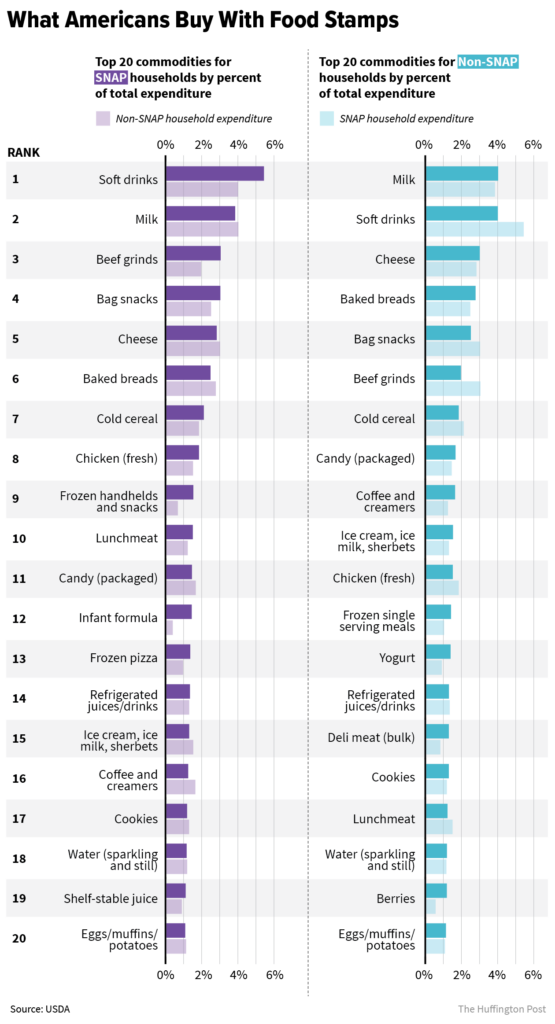Food stamp recipients buy a lot of soda, just like everyone else.
WASHINGTON ― Though people like to complain about food stamp recipients using their benefits for unhealthy things like soda and extravagances like crab legs, new data show they buy basically the same food as everyone else.
Households participating in the Supplemental Nutrition Assistance Program and households that didn’t get benefits both bought a lot of junk food, according to a new study commissioned by the U.S. Department of Agriculture, which oversees the program.
About 40 cents of every dollar went to basics like bread, milk, meat, eggs, fruits and vegetables for both types of households. And 20 cents of every dollar went to sodas and salty snacks. As a percentage of their spending, soft drinks were the top individual commodity among food stamp households, and they came in second place among non-SNAP households.

Kevin Concannon, the USDA’s undersecretary for nutrition, said the data shows food stamp recipients’ purchasing patterns are more similar to than different from everyone else’s.
“It’s disappointing in both SNAP households and households with incomes well above SNAP [levels] that as Americans we don’t adequately follow the dietary guidelines,” Concannon said in an interview. “We consume too much sugar.”
Monthly food stamp benefits average about $125 per person and Americans are eligible if their income is below 130 percent of the poverty line. Benefits can be used for any food item in a grocery store except alcohol or prepared meals sold hot and ready to eat. Forty-three million Americans receive benefits, making SNAP one of the federal government’s biggest anti-poverty programs.
Federal nutrition assistance faces an uncertain future. Incoming president Donald Trump never outlined a policy position on SNAP, but House Speaker Paul Ryan (R-Wis.) has been gunning for the program for years.
Republicans have proposed restricting benefits to nutritious foods only, an idea Democrats have vigorously opposed. The USDA has said a better approach is to boost the value of benefits when they’re used for fruits and veggies.
Concannon said the new data essentially confirmed earlier USDA research that analyzed the diets of SNAP recipients and people who didn’t receive benefits. The study analyzed spending patterns by looking at purchase data from a single large retail grocery chain with stores in about 35 states over the course of 2011. Purchasers were deemed “SNAP households” if they paid for at least 50 percent of their total purchase using a SNAP card.
As seen in The Washington Post,
